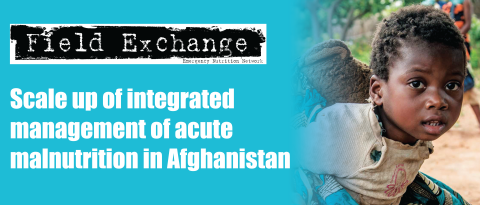Nutrition-sensitive agriculture: What have we learned and where do we go from here?
Summary of research1
Location: Global
What we know: Agriculture has strong potential to improve nutrition outcomes through improving food availability and access and through enhancing household food security, dietary quality, income and women’s empowerment.
What this article adds: A review was undertaken of 45 papers summarising empirical evidence (since 2014) including findings from impact evaluations of a variety of nutrition-sensitive agriculture (NSA) programmes and observational studies that document linkages between agriculture, women’s empowerment and nutrition. Results show that NSA programmes improve a variety of diet and nutrition outcomes in mothers and children. The review found marked improvements in recent studies in design, quality and rigour. To improve outcomes, NSA programmes should include health behaviour change communication (BCC); interventions to empower women; actions to improve health and water, sanitation and hygiene (WASH); and provide micronutrient-fortified products. Contextual, cultural, economic and food environment factors modify the impacts of agriculture on nutrition outcomes, with markets and women’s empowerment being among the most important. More research is needed into sustainability, scale-up and cost-effectiveness of NSA programmes and understanding their role in, contributions to, and interactions with markets, the food environment and local and national food systems.
A growing number of governments, donor agencies and development organisations are committed to supporting nutrition-sensitive agriculture (NSA) to achieve development goals. Although consensus exists on pathways via which agriculture may influence nutrition-related outcomes, empirical evidence on agriculture’s contribution to nutrition and how it can be enhanced remains weak. This paper reviews recent empirical evidence (since 2014), including findings from impact evaluations and observational studies that document linkages between agriculture, women’s empowerment and nutrition, as well as pathways, mechanisms and contextual factors that affect where and how agriculture may improve nutrition outcomes.

Methods
The search strategy was restricted to articles and papers published in English since a summary of evidence reviews by Ruel and Alderman in 2013 that document results of impact evaluations and observational studies of the linkages between agriculture, women’s empowerment and nutrition. After removing duplicates, the total number of papers found was 6,664. After screening their titles and abstracts using agreed inclusion and exclusion criteria, 43 papers remained. Additional articles were added based on knowledge of the authors and health experts, leaving a final total of 45 articles. Papers were included that studied the impact of the following agricultural programmes: biofortification, homestead production/home gardening, irrigation, value chains, livestock and agricultural extension; and the impact on the following nutrition outcomes: anthropometry, infant and young child feeding (IYCF) knowledge and practices, anaemia/haemoglobin; dietary diversity (DD), macronutrient intake and micronutrient intake.
Results
Interventions studies
Impact evaluations were reviewed that used mostly experimental or quasi-experimental designs. A variety of programmes were included, all of which focused on promoting production diversity and increasing access to nutritious foods such as biofortified staple crops, nutrient-rich vegetables and fruits, and animal-source foods.
The most consistent finding was the positive impact of these studies on household and child DD and on the consumption of animal-source foods or fruits and vegetables. Positive impacts on micronutrient intakes were also found in studies that measured dietary intake through a 24-hour recall in diverse settings and through a variety of programme models, including biofortified, vitamin A-rich, orange-flesh sweet potato (OSP), gender-sensitive enhanced homestead food production (EHFP), livestock and dairy value chain programmes, and a fruit and vegetable solar market garden (SMG) irrigation programme. Overall, these programmes were highly successful in meeting their production and consumption goals and, more specifically, in achieving their main objective of improving household and individual access to nutrient-rich foods.
A new set of studies also documented evidence of the impacts of EHFP (with chickens) on child haemoglobin (Hb) and anaemia in Burkina Faso (Olney et al, 2015) and Nepal (Osei et al, 2017). In Burkina Faso, a group that received a two-year EHFP programme with behaviour change communication (BCC) delivered by a health committee member saw significant increases in child haemoglobin levels (Hb) (+0.7g/dL) and reductions in anaemia (-14.6ppts) in children 3.0-5.9 months of age, compared with a control. Other studies also produced evidence that agricultural programmes could be effective platforms to deliver micronutrient-fortified products targeted to young children. Of the six studies that measured child anthropometry, however, none found an impact on stunting and impacts on wasting were small or marginally significant.
Overall, the new studies have expanded the breadth of agricultural programmes studied and the set of nutrition outcomes measured in children. New studies also started to document some of the untapped potential of agriculture to improve women’s nutritional status, especially in countries where maternal undernutrition is a critical problem (Burkina Faso, Nepal and Zambia).
The range of effects on production and consumption varied between studies, but in general impacts on maternal and child DD, food intake, micronutrient status and weight-specific nutritional status indicators were modest. For stunting, the lack of impacts may be explained at least in part by the relatively short duration of most programmes (one to two and a half years) and the wide age range targeted by many, which was often well beyond the first two years of life, when the greatest benefits on child growth from nutrition interventions can be expected.
Several new studies specifically documented impacts along the project-specific hypothesised pathways, strengthening the plausibility of impacts on maternal and child diets and nutritional status outcomes. The review also found marked improvements in recent studies both in programme design and in the quality and rigour of impact evaluations.
Observational studies
The second set of studies reviewed were observational studies that document associations between agricultural practices and nutrition outcomes. An exceptionally large number of such studies have been published in the past three years; many focusing on the importance of production diversity for household, maternal and child diets. The main takeaway from this literature is that production diversity and livestock ownership are consistently associated with household and child DD and increased intake of essential micronutrients. Livestock ownership is also specifically associated with greater animal-source food intake (especially milk in young children). Evidence of associations with health and nutritional status outcomes is still limited, but milk intake (in households that own livestock) is positively associated with child linear growth.
A second takeaway from this literature is that associations between production and consumption diversity were modified by contextual factors, the most important being market access. Other contextual, socioeconomic and food environment factors were also identified as important effect modifiers of the associations between production, consumption and nutritional status. The quality of the association studies varied but was also generally better than that of earlier studies, with greater attention paid to using appropriate statistical modelling tools, controlling for potentially confounding factors, using robustness checks as needed and focusing on appropriate age groups for nutritional status indicators.
Conclusions
Findings show that NSA programmes improve a variety of diet and nutrition outcomes in both mothers and children, especially when they include nutrition and health BCC and interventions to empower women. Greater benefits for child nutrition are achieved when programmes incorporate actions to improve health, WASH and provide micronutrient-fortified products. Findings suggest that NSA programmes should focus on improving access to and consumption of high-quality diets for all household members, rather than on reducing childhood stunting. A variety of contextual, cultural, economic and food environment factors also modify the impacts of agriculture on nutrition outcomes, with markets and women’s empowerment being among the most important. Research priorities include documenting the sustainability, scale-up opportunities and challenges, and cost-effectiveness of NSA programmes and understanding their role in, contributions to, and interactions with markets, the food environment and local and national food systems.
Endnotes
1Marie T. Ruel, Agnes R. Quisumbing, Mysbah Balagamwala 2017. Nutrition-Sensitive Agriculture: What Have We Learned and Where Do We Go from Here? IFPRI Discussion paper.
References
Olney DK, Pedehombga A, Ruel MT and Dillon A. 2015. A 2-year integrated agriculture and nutrition and health behavior change communication program targeted to women in Burkina Faso reduces anemia, wasting, and diarrhea in children 3-12.9 months of age at baseline: a cluster-randomized controlled trial. Journal of Nutrition 145 (6): 1317–1324. doi:10.3945/jn.114.203539.1.
Osei A, Pandey P, Nielsen J, Pries A, Spiro D, Davis D, Quinn V and Haselow N. 2017. Combining Home Garden, Poultry, and Nutrition Education Program Targeted to Families with Young Children Improved Anemia among Children and Anemia and Underweight among Nonpregnant Women in Nepal. Food and Nutrition Bulletin 38:49–64. doi:10.1177/0379572116676427.
Ruel MT and Alderman H. 2013. Nutrition-sensitive interventions and programmes: how can they help to accelerate progress in improving maternal and child nutrition? Lancet 382:536–551. doi:10.1016/S0140-6736(13)60843-0


